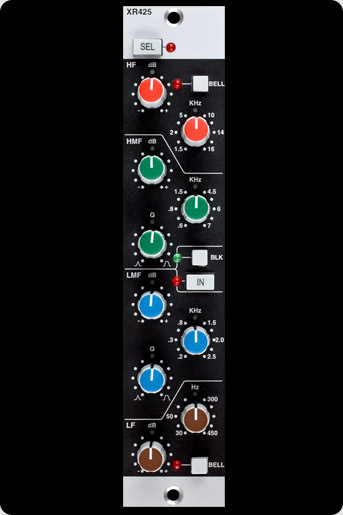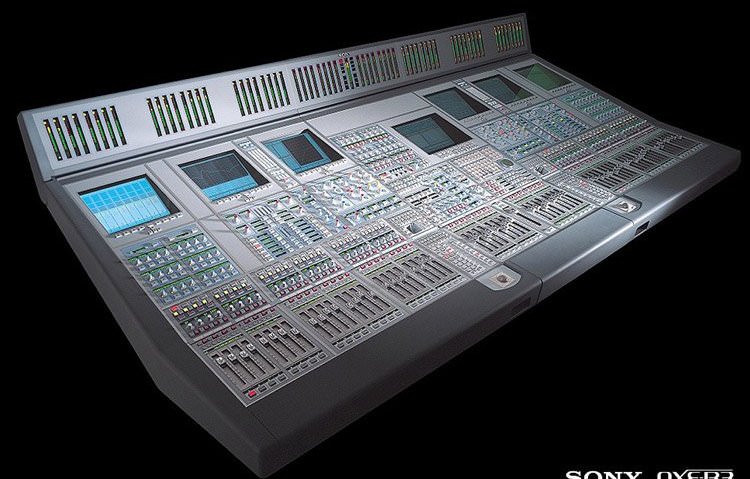SSL E-Series EQ

Mention SSL desk EQ to anyone in the know and their first question will probably be, ‘Which colour?’ SSL explain: “Prior to 1987 SSL used the colour of the Low Frequency EQ knob caps to indicate which type of EQ was fitted. All consoles were custom built and could feature different combinations of EQ module. The following colour codes apply:
E-Series BROWN: The original SSL EQ fitted to all consoles prior to the summer of 1985. Despite the rumours these equalisers only came in one version. The EQ card was called the ’02’.
E Series ORANGE: The infamous EQP equaliser. This was a variation on the Brown EQ with controls simulating the curves of a valve type EQ. Very few were sold. This card was named the ‘132’.
E-Series BLACK: The last version of the standard E series EQ. It evolved in the early 1980’s from discussions with many top engineers and proved very popular. The EQ card was called the ‘242’.
G-Series: With the arrival of the G Series console in 1987 the colour coding was abandoned and the classic SSL end cap colour scheme used today was adopted. First introduced in 1987 the original G Series EQ introduced Q characteristics which were proportional to gain settings and had a degree of over shoot when boosting and under shoot when cutting.”
By bundling them together here we risk inciting the wrath of audio nerds around the globe. So be it. The truth is that unless you’re buying an entire SSL console, you don’t just have to choose one or the other (and even then there are options for mixing and matching different EQ modules). SSL’s current E-Series EQ module for the X-Rack or API 500-series format allows users to switch between brown and black modes. Software emulations offer a similar choice. If you just want one or two channels of the real thing, most good techs should be able to build SSL channel strips or EQ modules into rack-mount units.
Chopstick has a collection of racked SSL modules and rates them highly as all-rounders. “I’m fortunate enough to own four SSL EQs,” he tells us. “They’re great on bass and vocals. I also use them on mid frequencies such as Rhodes, pads, strings and synths. The black knob E-Series EQ always does the job well. It never really stands out, but it sounds clean and sometimes you just need a quality clean EQ. I also used it on my master bus years ago and I loved the tight sound in the bottom end and the beautiful highs. At that time I didn’t have my EMT or Siemens W295b EQs for boosting the highs, which I now prefer over the E-Series. The SSL EQ does exactly the job you need it to do on pretty much any material, but that could also lead to boredom as it lacks a bit of character in my eyes. In relation to electronic music, I’d use it mainly on bass, though it does a good job on the mids and highs too.”
The SSL EQ does exactly the job you need it to do on pretty much any material.
Various companies offer modelled software emulations of these classic all-rounders, including SSL’s own Duende Native Channel Strip plugin. Also check out the Waves SSL G-Equalizer and Universal Audio’s SSL E-Series Channel.

08.29 PM
I love you all.
08.53 PM
You missed KUSH! for higher, simply the best.
08.55 PM
PS I dot think you acknowledged that precision cuts are a different ballgame to those beautiful wide sweeps. Different tool.s.
09.00 PM
for me, Pultec for bass. Cambridge for tight cuts. and natives for gentleness. If that makes sense. Either way, keep up the good work.
09.29 PM
Maag?
03.01 AM
The most important Eq curve for dance music is the 24 or preferably 48 dB/Oct slope highpass filter. It allows producers with even average abilities to create low end and low mids that are complex and layered yet intelligible. Most producers I know have an Eq doing just this on good percentage of the tracks in every song. I’d say that for and EQ to truly be the EQ of dance music it would need to be able to not only do this but be available to do it on 10 or more (usually more) stereo tracks at the same time. This is where the humble native EQ in most daws shines with its low DSP rent high flexibility. It might not be the most glamorous or best sounding EQ but it might do more for the bass than even a pair of hardware pultec or even a gaggle of dsp pultecs. Add in its pre and post internal spectrum analyzer and it seems pretty amazing.
04.25 PM
I Love the IK Pulteq, it just makes most things sound better. Too easy to get carried away with it though.
06.48 PM
Just some notes on availability of these EQs as emulations. Both the API 500 series and Sonnox Oxford have officially licenced plug-in versions from Universal Audio.
http://www.uaudio.com/store/equalizers/api-500-series-eq-collection.html
http://www.uaudio.com/store/equalizers/oxford-eq.html
04.14 AM
KEEP up the phenomenal work guys!
10.16 AM
I own a clariphonic myself, and I don’t think there’s a better eq to focus and lift the highs on your 2-buss. Personally, I’m getting ready to sell my SSL E-series EQs so that I can pickup an Electra from Kush…
He’s doing it right.
11.59 AM
Awesome magazne with loads of very useful tricks and insights for the general producing general producers that just don’t have the means to approach music with real world professional knowledge. Very grateful and wish you a continuesly sucessful and quality ensured publication of such! 100% support :)
06.41 PM
Um how there is no baxendall eq here is just beyond me. The most used and useful eq of all time. Didn’t get a look in.
02.54 AM
Kush isn’t a secret anymore, the word is out. The best, most intuitive and creative EQ and Compressor I’ve ever used. Slow to upgrade completely to AAX, but worth the wait.
01.10 PM
Oh .. I love SSL EQ man ! its the amazing shit u can ever get 😀
12.54 AM
what about the millennia NSEQ-2, the GML 8200 and Maselec Mea 2 ? (there’s also the Crane IBIS)
06.12 AM
That mackie EQ is fucking shite, I can’t believe you put that next to the SSL, which is the mutt’s nuts.
02.00 AM
I use the 5500 in my mastering rig everyday. It’s stellar for fast program, passes every transient perfectly. Big bold sound. Not what I would call transparent but perfect for electronic music.
Will Brodeur
lacquer channel mastering.
10.33 PM
Elysia Xpressor is one notable absence from this list… the Elysia stuff is practically made for electronic music, so clean and precise.
06.03 AM
So why you not tell anything about NEVE EQ’s?